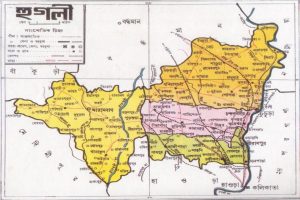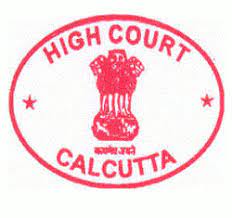History

HISTORICAL DETAILS
Chinsurah Sadar Sub-Division:
The town of Hooghly-Chuchura was founded by the Portuguese in 1579. But, the district has thousands of years of rich heritage in the form of the great Bengali kingdom of Bhurshut. The city flourished as a trading port and some religious structures were built. One such structure is a Church dedicated to a Charismatic statue of the Mother Mary brought by the Portuguese. In the 17th century, political disorder struck the city and the Mughal governor of Bengal expelled the Portuguese. The statue was lost in the river by the Portuguese when fleeing. The statue was later found by the local people on the bank of the river. The arrested Portuguese were taken to Delhi where a death sentence of trampling by elephants was decreed. When the emperor Shah Jahan heard this he ordered the priests released and granted a piece of land on the bank of the river Hooghly where the statue of the Mother Mary was reestablished. There a church was constructed to house the statue, which still receives pilgrims today. The church was renovated in 1980s and has been declared as a balilica by the authority of Rome.
In 1656 the Dutch erected a factory on the site of the town. At that time Kolkata was the principal Dutch settlement in Bengal, used as a base for the Dutch intra-Asian opium trade.
In 1759 a British force under Colonel Forde was attacked at the Battle of Chinsurah by the garrison of Chinsurah on its march to Chandernagore. In less than half an hour the Dutch attackers were entirely routed. In 1795, during the Nepoleonic wars, the settlement was occupied by a British garrison. At the peace of 1814 it was restored to the Dutch. It was among the cessions in India made by the king of the Netherlands in 1825 in exchange for the British possessions in Sumatra.
Both Chinsurah and Hooghly played an active role in the Bengal renaissance and the Indian independence movement. “Vande Mataram”, India’s national song, was composed by Bankim Chandra Chattppadhyay at Joraghat in Chinsurah. Nazrul Islam’s famous revolutionary songs were penned while he was imprisoned by the British in Hooghly Jail.
Chandernagore Sub – Division :
Unlike the rest of India which had been a British colony for two hundred years, Chandernagore was ruled by France. So she had an interesting history and Identity which has fascinated the historians throughout the world.
The French came to Chandernagore as also Bengal for the first time in 1673. In that year (1673-74) Duplessis, the French Commander, built a house after gathering a plot at Taldanga on the northern part of the present Chandernaogre with the permission of Ibrahim Khan, the then Nawab of Bengal.
Then in 1687 the French Commander Deslandes started business at bandel in Hooghly, but coming across many inconveniences he tried to shift to another place in Hooghly and failed to received the permission of the Nawab to build a new firm at the very place obtained by Duplessis at Chandernagore. At last in the next year, the French received the permission to carry on duty free business in Bengal, Bihar, Orissa on payment of Rs. 40,000/- to the Moghul Government. (Aurungzeb was Emperor then). Deslandes laid the foundation of Chandernagore.
In course of time Chandernagore occupied the topmost position among all foreign settlements of Bengal in trade and commerce. It maintained trade relations with Basora, China, Pegu, Jedda, Tibet etc. In those days Chandernagore was a bigger centre of commerce than Calcutta.
Chandernagore continued as the commercial center but completely banking on the local businessmen. Among them Indranarayan Chowdhury was the most prominent figure. In the year 1730 he was appointed the courtier of the Company. He received a gold medal from Lous XV, the King of France. He constructed the temple of Sri Nandadulal and a rest house in the year 1740.
Colonel Robert Clive of British East India Company Limited and Admiral Watson of British army captured Chandernagore in March, 1757. It was a turning point of Indian History. Chandernagore was again taken by French through a treaty with the British but again lost to them in 1794 but ultimately ruled the town from 1816 to 1950. In 1832 the French administrators set up the comite de Bienfaisance whose main aim was to help the poor people. In 1862, Ecole de saint mare was established, which is at present one of the best educational institutions of the town – Kanailal Vidyamandir. In 1867 alfred Curjon set a convent for the upliftment of the women education system. In 1871, a big hospital was set up in Chandernagore with the help of Doctor Margon. In 1896, Durga Charan Rakshit, the courtier of the French Government, achieved the distinction of becoming the first Indian to be conferred with the chevalier de legion d’Honour.
In 1915, twenty people from Chandernagore participated in World War I in support of the French People. The Father of the Nation Mahatma Gandhi came to Pravartak in Chandernagore to inspire people in the freedom struggle in 1925 and again in December, 1927. On 12th March, 1930 Mahatma Gandhi called the nation for the famous Dandi March against the infamous Salt Act. Yuba Samity of Chandernagore came forward to support the movement with full enthusiasm.
In the thirties the Communist movement was taking shape in India and Chandernagore took a leading part in it under the guidance of Dr. Hiren Chatterjee, a Commissioner General under the French Government. As Chandernagore was under the French rule, the party make it decided to make it their district headquarters.
In 1947, the French Government declared Chandernagore a free city and gave more power to Sasan Parishad. In June 1948, the French Government went for a pole to decide the status of the city and in the opinion poll a overwhelming majority of 97% people expressed their desire to merge with India. So, in May, 1950, the French made a defacto transfer of Chandernagore to the India Government and on 2nd February, 1952 they made De Jure transfer which was approved by the French Republican Society on 11th April, 1952, Chandernagore Completely became a part of India.
Serampore Sub – Division :
Satellite town of Kolkata, Serampore is on the banks of the river Hooghly, 25 Km north of Kolkata. It was the center of Danish colonialism (1793-1834) till the East India Company took over in 1845. The house of the Danish Governor, the Roman Catholic Church and St. Olaf Church (1808) still attract tourist, for their architectural excellence.
The first Bengali book and newspaper were published from Serampore. Sermpore College, established in 1818, has a museum which exhibits information about the missionaries. Sir Williams Carey, Ward and Marshman and their activities. The triangular park in front of the church has a dozen cannons used by the Danish. The narrow lane near the railway station leads to the cemetery where William Carey and other notable persons of the day remain buried.
The other attraction is the Jagannath temple in Mahesh (3 Km.) where the Rathyathra festival is held. Serampore Railway Station is the major railway station.
Arambagh Sub – Division:
The present Sub-Division was formed in 1879. It was known as Jahanabad Sub-Division as the headquarter of the Sub-Division was the town of Jahanabad. On 19th April, 1900 the name of Jahanabad was changed to Arambagh which means the garden of ease and comfort. The name owes its origin to an outstanding garden called Arambagh owned by the family of Miyan.
Our great social reformer Raja Rammohon Roy was born at village Radhanagar in Khanakul P.S. which is under Arambagh Sub-Division. So far it is known, Bankim Chandra Chattopadhyay was the Sib-Divisional Officer of Jahanabad in the year 1892 while hewrote the novel “Durgeshnandini”. The great noble lady Bhagabati Debi, the mother of Pandit Iswar Chandra Vidyasagar was born at village Goghat under this Sub-Division. Pandit Iswar Chandra Vidyasagar was also born at village “Birshingha” which was also earlier included under Arambagh Sub-Division, now under District Paschim Midnapore. Kamarpukur, the birth place of Sri Sri Ramkrishna Paramhanshadeb falls in this Sub-Division.
Number of Courts (total as well as Sub-divisions-wise):
- Hooghly district as a whole – 4
- Sadar – 19
- Chandernagore Sub-Division – 9
- Serampore Sub-Division – 14
- Arambagh Sub-Division – 9
Police Stations (total as well as sub-division-wise ):
Police stations under Chinsurah – Chinsurah
- Mogra
- Balagarh
- Pandua
- Polba
- Dadpur
- Dhaniakhali
- Gurap
Police stations under Chandernagore – Chandernagore
- Bhadreswar
- Singur
- Haripal
- Tarakeswar
Police stations under Serampore – Serampore
- Uttarpara
- Chanditala
- Dankuni
- Jangipara
- Rishra
Police Stations under Arambagh – Arambagh
- Pursurah
- Khanakul
- Goghat



